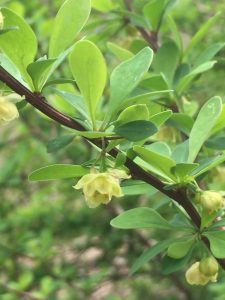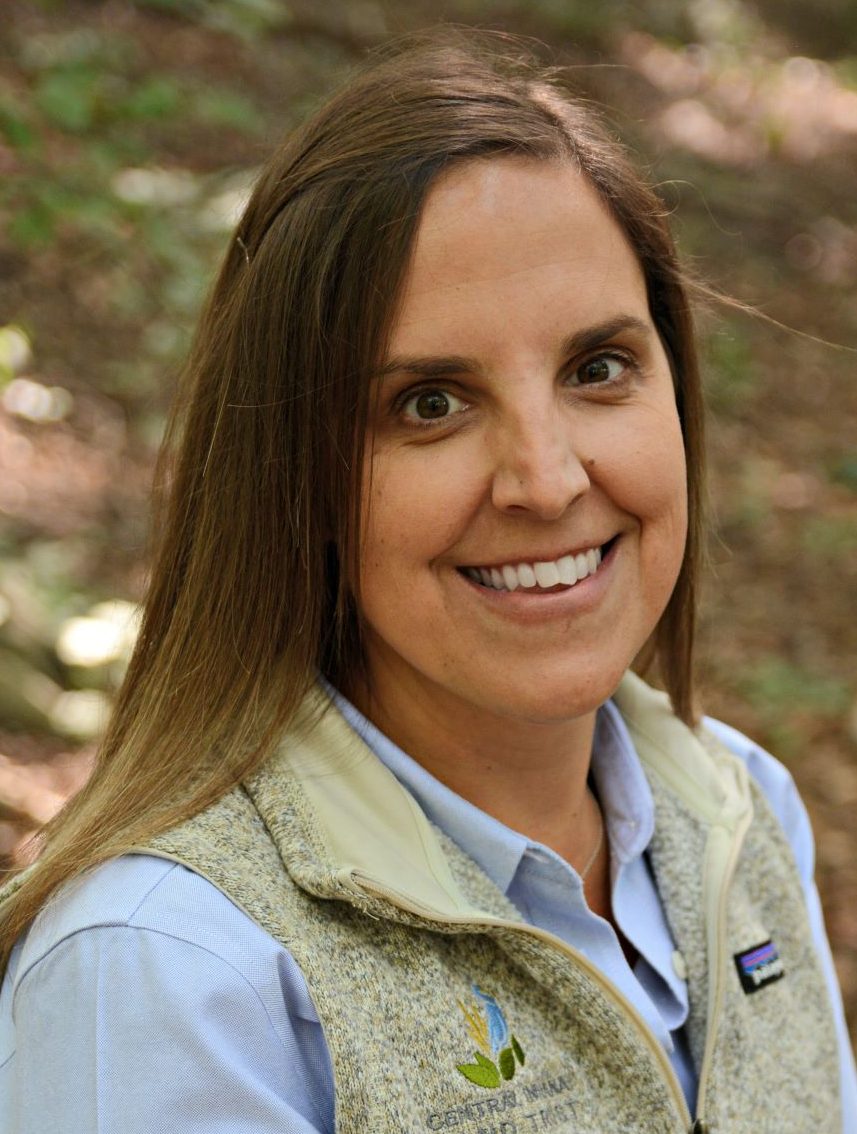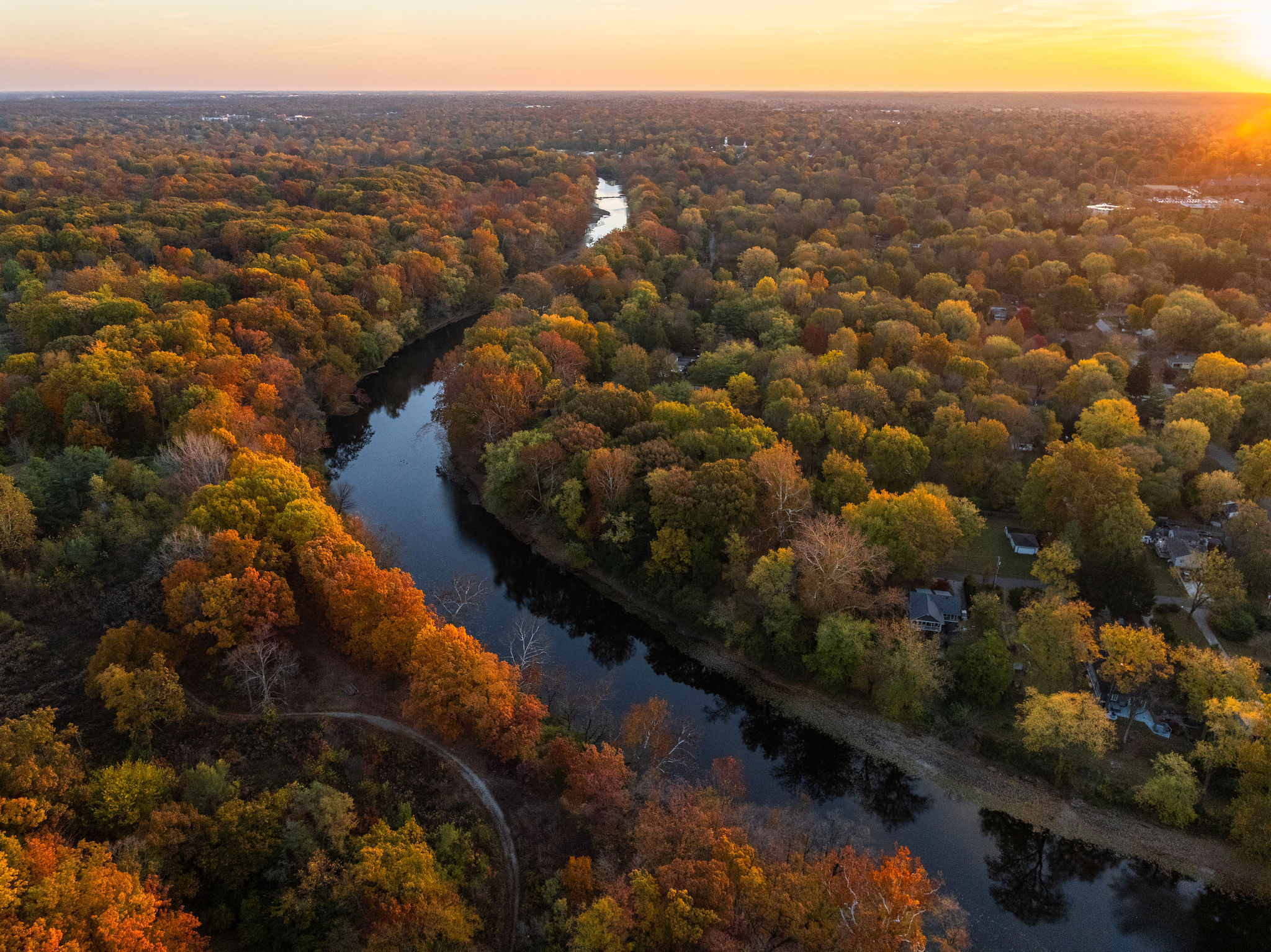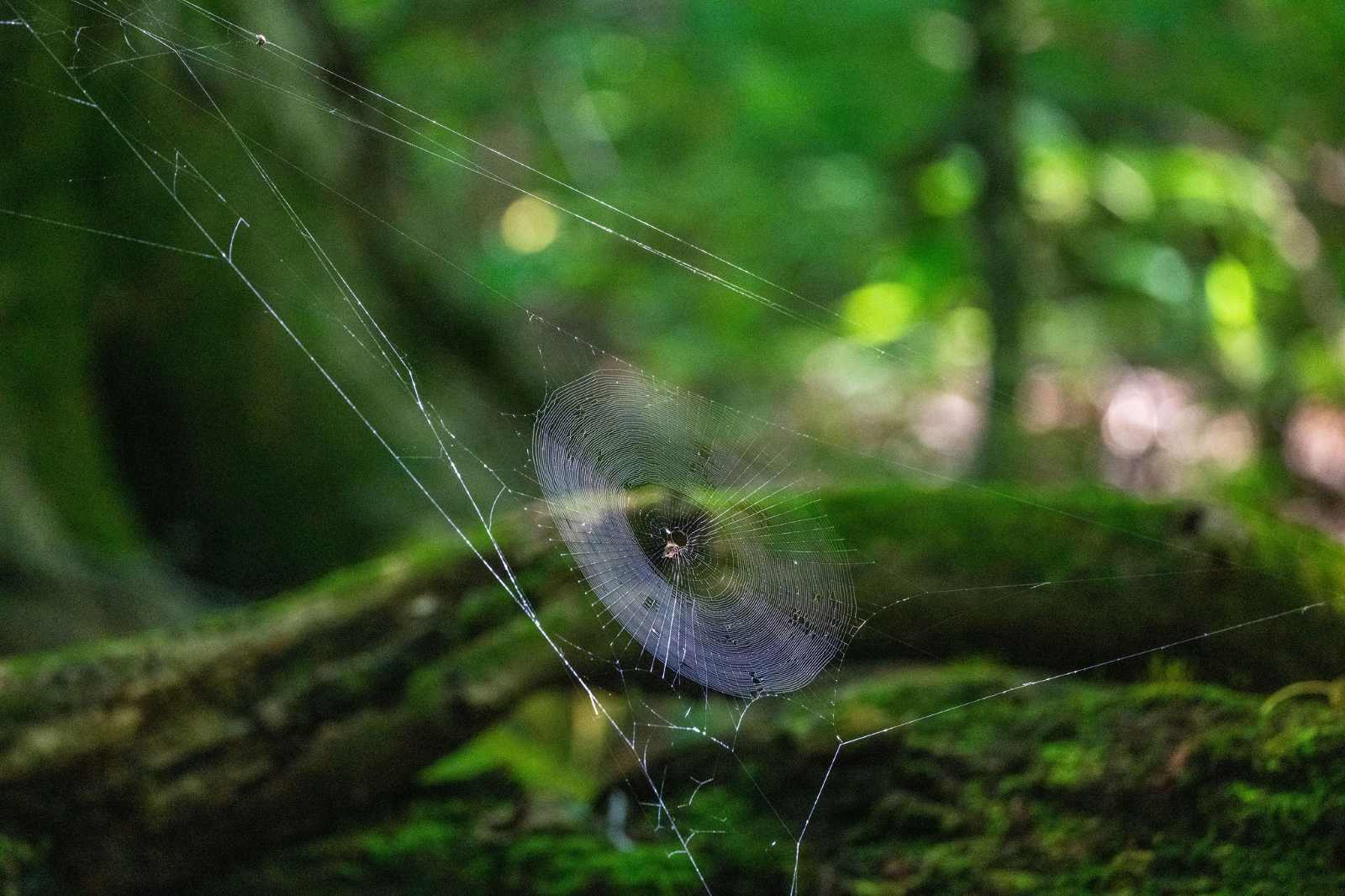
blog post Oct 2023
Grace removing invasive honeysuckle at White River Bluffs
“Is It Invasive?”
Written By: Grace van Kan
Date Published: October 5, 2023
Grace van Kan
“Should I get rid of it?”
“What’s the best way to eradicate it?”
“What should I put there instead?”
Our stewardship team gets a lot of great questions about invasive species!
First off, what do we mean by “invasive”? Invasives species can be plants, animals, or insects. An invasive species is native to another part of the world but has been introduced to a new environment, intentional or not. Often, invasive species are transported by people and can be brought over in nursery shipments from overseas.
Many invasive terrestrial plants were introduced to North America as ornamentals, so you’ve probably seen them around.
Invasive species have the potential to out-compete native species and eradicate them from their natural habitat. Native animals and insects rely on native aquatic and terrestrial plants for habitat and sustenance. So when native plants recede from the landscape, it can have devastating effects down the line.
But conversely, removing an invasive can have far-reaching benefits! Our team has experienced this firsthand—for example, at Meltzer Woods. With the removal of wintercreeper, we’ve seen the return of spring ephemerals like trilliums and jack-in-the-pulpit, as well as rarer putty root orchids. (Read more about this success story here.)
So what’s the best course of action for landowners when it comes to dealing with invasives? There are many, many resources out there on invasive species, and it can be overwhelming if you don’t know where to start. The DNR invasive species web page offers a comprehensive species list.
Otherwise, a very effective way to learn about invasives is to join the CILTI stewardship crew during a volunteer day at one of our preserves!
If you are looking for more opportunities to get hands-on education or help out in your area, the State of Indiana Cooperative Invasives Management (SICIM) is an excellent jumping off point. Here, you can learn about invasive plant species throughout Indiana and find information on your local Cooperative Invasives Species Management Area (CISMA).
A CISMA is a local group or partnership that collectively manages invasive species in their area, typically by county. SICIM and the USDA Natural Resources Conservation Service (NRCS) have worked together since 2017 to develop CISMAs throughout the state of Indiana.
Get acquainted with your own property by having a landowner survey completed by one of SICIM’s regional specialists. During a landowner survey, an experienced individual will walk the property with the landowner (or land manager) to identify invasive species, recommend native species, and answer any questions. Find your regional specialist for this free service here.
The SICIM website is one of many great websites that provides an excellent variety of resources, from a blog series highlighting specific invasive species to a list of invasive species literature (some with free downloads!).
Also check out Indiana Native Plant Society (INPS), especially for more information on which native plants you can use to replace invasives and even your lawn.

Japanese barberry
A few of the invasive species that have commonly been used for landscaping in the past (and sometimes present) are:
- Amur honeysuckle (Lonicera maackii)
- Callery pear (also called Bradford pear) (Pyrus calleryana)
- Wintercreeper (Euonymus fortunei)
- Burning bush (Euonymus alatus)
- Autumn olive (Elaegnus umbellata)
- Japanese barberry (Berberis thunbergii)
I’ll leave you with one of my favorite short-and-sweet resources, this pamphlet from INPS. This visual guide to invasives is available online through Purdue Extension. You can also pick one up from a White River Docent at Oliver’s Woods during one of the times docents are present (check the preserve page for schedule), or at one of our upcoming events.
In short, the best way to prevent the spread of invasive species is to eradicate them where they are and remove the seed-producing individuals. When planning a new landscaping project, make sure that you are only choosing native species. And, of course, support our team’s work so we can keep restoring native habitats across Central Indiana!

Ben Valentine
Guest Blogger
Ben Valentine is a founding member of the Friends of Marott Woods Nature Preserve and is active in several other conservation organizations. He leads a series of NUVO interviews with Indiana's environmental leaders, and he cherishes showing his son all the wonders of nature he grew up loving.

DJ Connors
Guest Blogger
DJ Connors, a Central Indiana native and late-to-life hunter, combines a lifelong appreciation for wildlife and the outdoors with a deep passion for exploring the natural beauty of the area he has called home for most of his life. As a husband and father of three, he is committed to ensuring his children have the same opportunities to connect with nature and appreciate the outdoors in their community. DJ’s unique journey into hunting emphasizes sustainability, responsible stewardship, and the importance of preserving these experiences for future generations.

Bridget Walls
Guest Blogger
Bridget is our first ever Communications and Outreach Intern. She is a graduate of Marian University, where she combined English, studio art, and environmental sciences in her degree studies. As treasurer for Just Earth, the university's environmental club, she helped plan events encouraging a responsible relationship between people, nature, and animals.

Jordan England
Guest Blogger
Jordan England is a lifelong Shelby County resident who graduated from Waldron Jr. Sr. High School (just a few miles from Meltzer Woods!). After earning her B.S. degree in Retail Management from Purdue University, she returned to Waldron to start a family with her husband, Brian. Together they have 3 young children and enjoy sharing with them their love of the community. Jordan is the Grants and Nonprofit Relations Director at Blue River Community Foundation, managing BRCF’s grant program, providing support to local nonprofits, and promoting catalytic philanthropy in Shelby County.

Cliff Chapman
President and CEO
As CILTI’s President and CEO, Cliff keeps CILTI’s focus on good science and stewardship. He’s mindful that the natural places you love took thousands of years to evolve and could be destroyed in a single day, and that knowledge drives his dedication to their protection.

Stacy Cachules
Chief Operating Officer
Among her many key duties as Assistant Director, Stacy has the critical task of tracking our budget, making sure we channel donations for maximum efficiency. When her workday’s done, Stacy loves to spend time with her two young boys—and when not traveling, she’s likely planning the next travel adventure.

Ryan Fuhrmann
Vice Chair
Ryan C. Fuhrmann, CFA, is President and founder of Fuhrmann Capital LLC, an Indiana-based investment management firm focused on portfolio management. Ryan’s interest in land conservation centers around a desire to help preserve natural habitats for wildlife and the subsequent benefits it brings to people and the environment.

Joanna Nixon
Board Member
Joanna Nixon is the owner of Nixon Consulting, an Indianapolis-based strategy and project management firm focused on the nonprofit sector. She currently serves as the Philanthropic Advisor for the Efroymson Family Fund. Prior to opening her consulting practice in 2000, Joanna was vice-president for grantmaking at Central Indiana Community Foundation (CICF). Joanna has more than 25 years of experience in the nonprofit and arts and culture sector. She is passionate about the environment and loves bringing big ideas to life and creating high-quality arts and culture programs and experiences. Joanna enjoys outdoor adventures, including competing in fitness obstacle course races and hiking with her high energy Australian Cattle Dog, Jackson.

Karen Wade
Board Member
Before retiring, CILTI board member Karen Wade worked for Eli Lilly & Co. In retirement she volunteers for a number of organizations, including the Indiana Master Naturalist program, Johnson County Native Plant Partnership CISMA, Meadowstone Therapeutic Riding Center, and Leadership Johnson County.

David Barickman
Development Systems Manager
Born and raised in Central Illinois, David spent many days as a child wandering around the river, forest and lakes there. He works behind the scenes as a key member of our fundraising team. When not working, David loves to be outdoors hiking, fly fishing, kayaking or woodworking.

Jamison Hutchins
Stewardship Director
Jamison leads our stewardship team in caring for the land that is so important to you. He comes to our team after eight years as Bicycle and Pedestrian Coordinator for the city of Indianapolis, where his work had a positive impact from both health and environmental perspectives.

Jen Schmits Thomas
Media Relations
An award-winning communicator and recognized leader in Central Indiana’s public relations community, Jen helps us tell our story in the media. She is the founder of JTPR, which she and her husband John Thomas own together. She is accredited in public relations (APR) from the Public Relations Society of America, and loves to camp and hike in perfect weather conditions.

Shawndra Miller
Communications Director
Shawndra’s earliest writing projects centered around the natural world, starting when a bird inspired her to write her first “book” in elementary school. Now she is in charge of sharing our story and connecting you to our work. Through our print and online materials, she hopes to inspire your participation in protecting special places for future generations.

Phillip Weldy
Stewardship Specialist
Phillip enjoys nature’s wonders from an up-close-and-personal perspective as he works to restore the natural places you love. As an AmeriCorps member in Asheville, NC, he had his first full immersion in relatively undisturbed land while reconstructing wilderness trails in National Parks and National Forests.


December 11, 2025
Brown County is beloved for its vistas of iconic Southern Indiana hills. Now the forests under protection in the county include another 89 acres. That’s all thanks to our members’ generosity!
Betley Woods,Blossom Hollow,Callon Hollow,Newsroom,Properties


December 9, 2025
Board member Ryan C. Fuhrmann, CFA, is President and founder of Fuhrmann Capital LLC, an Indiana-based investment management firm. As our incoming board chair, Ryan brings a strong desire to preserve natural habitats for wildlife. We asked him to share his perspective on making gifts of stock to the [...]
Newsroom


December 2, 2025
Our board member, John Bacone, reflects on conserving key natural areas. He led the Department of Natural Resources Division of Nature Preserves for over four decades. Years ago, when I was working in the Indiana DNR Division of Nature Preserves (DNP), I asked Bob Waltz, the State Entomologist, how [...]
Betley Woods,Blossom Hollow,Homepage,Meltzer Woods,Newsroom,Properties,Stewardship




























